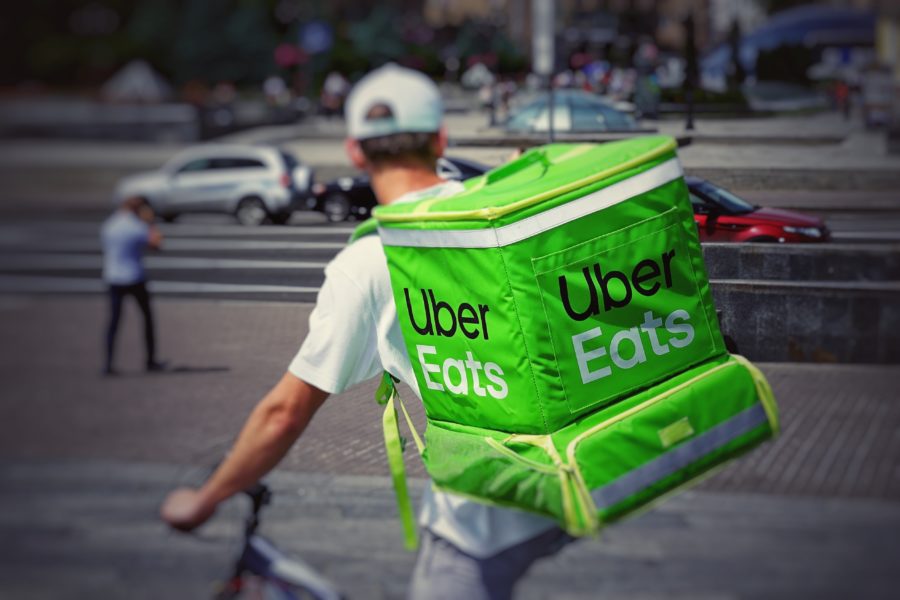Food delivery services like DoorDash and Uber Eats became an essential service during the pandemic, when consumers were mostly confined to home and restaurants were closed to indoor patrons.
But now that life is returning to normalcy, these companies are scrambling to maintain their customer base.
“What they need is to give customers a non-pandemic reason to continue to use the services. For most people, the best non-pandemic-related reason is convenience,” industry analyst Jennifer Christ of the Freedonia Group told The Food Institute in an email.
“Many have learned to appreciate having food delivered to their homes and that convenience is multiplied for people living in multi-person households where each person might not want to order the same kinds of food. These on-demand restaurant delivery companies will need to play up those benefits and be sure that the costs aren’t out of line with the increased convenience customers experience with these services.”
ISSUES AT PLAY
Even at the height of the pandemic, food-delivery companies were losing money, largely because of thin margins and high labor costs, despite soaring valuations, The Wall Street Journal (May 28) reported. And their efforts to increase those margins sparked a backlash among their restaurateurs, who complained the delivery service percentage was too high, ranging from 15% to 30% of the bill.
A Deutsche Bank analysis determined, however, that after accounting for operational expenses, DoorDash, for example, makes just 90 cents on a $36 bill – and that total was the best in the industry, the Journal reported.
As of November, DoorDash had 50% of the food delivery market, followed by UberEats/Postmates at 30% and GrubHub at 18%, Eater reported.
Food delivery sales spiked 122% last year to $51 billion, more than two-thirds attributed to pandemic lockdowns. Restaurant sales totaled $659 billion last year, down from $863 billion in 2019, the National Restaurant Association noted. The NRA estimated 2020 losses at $240 billion.
“Please, please, please: Delete your delivery apps,” Ashish Alfred, a chef who owns three Maryland restaurants urged his Instagram followers, Politico (May 8) reported. “Every time you call Uber Eats or Postmates or whoever it is, they are hitting the restaurants that are already hurting for 30 percent. These are multimillion, sometimes billion-dollar companies that don’t need that extra money that could really be helping us out right now.”
MURKY OUTLOOK
With people beginning to venture out, the delivery business is likely to take a serious hit unless these companies expand into other areas and adopt new technologies.
“For instance, several [delivery services] began offering on-demand grocery delivery last year. On-demand medication delivery – another thing people need and want quickly but might have trouble going out to get – was the next step taken this year as DoorDash now delivers from CVS Pharmacies and Uber provides prescription medication delivery via its ScriptDrop program,” Christ noted.
“The key to expanding and retaining customers will be their ability to keep delivery fast and prices reasonable. One such step in that direction is the use of automation and robot delivery and some – including Uber – are already experimenting in this area.”
Much of the attention now is turning toward grocery and alcohol orders, which bring higher revenue, and coupling those with hot food deliveries, The Wall Street Journal (May 31) reported. Many cities and states relaxed rules during the pandemic to allow alcohol to be ordered with meals, making meal delivery more profitable, the Journal noted. Sales of alcohol on delivery apps tripled in 2020 compared to 2019, and food retailers saw an increase in liquor sales of 27%, according to NielsenIQ.
One problem, however, is that not all grocery and drug stores will package the orders and have them ready for pick-up. In those cases, drivers have to assemble the orders themselves.
DoorDash made a deal with Walmart before the pandemic hit and expanded the service during lockdowns.
“We definitely scrambled into action and went all hands on deck,” Fuad Hannon, DoorDash’s head of new verticals, told the Journal.
Another option is delivery within an hour of not only food but other staples.
Deeplaxmi Adke, founder of Her Handshake, which connects consumers with women professionals, suggested to The Food Institute companies like Uber Eats and DoorDash develop concierge services like laundry pickup, and camp and school pick-up services. Add to the list competitive shopping: “I want 10 pizzas for a party. Uber should be able to show me comparable pricing at pizza stores,” Adke said in an email.











